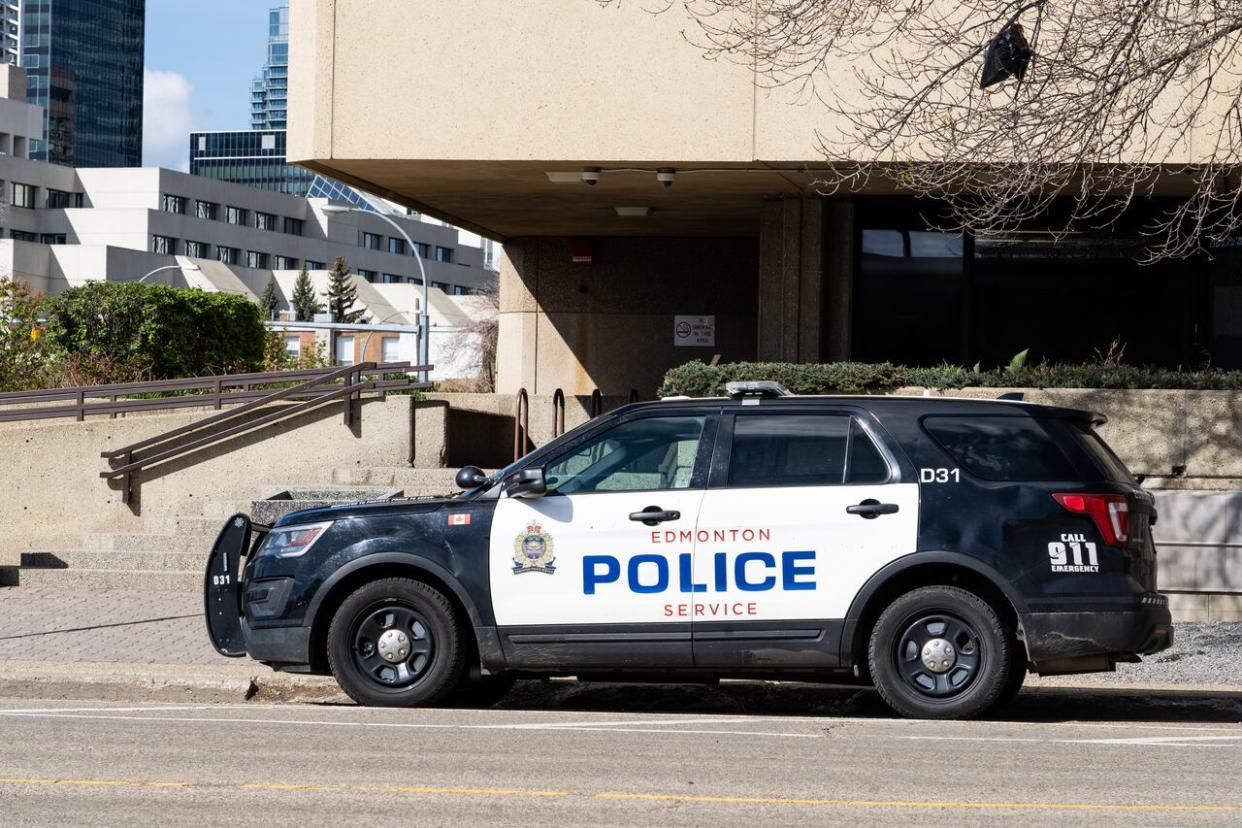Policing in core pushing crime to other parts of Edmonton, police inspector says

Edmonton police are keeping an eye on how increasing police presence in the downtown core may be pushing crime and disorder to other parts of the city.
During an Edmonton police commission meeting Thursday, Edmonton Police Service provided an update on the addition of beat officers to central neighbourhoods that previously didn't have dedicated patrols.
In February, 12 police officers were reassigned to cover Cromdale, Oliver and Jasper west – three central communities that EPS had identified as needing help due to high call volume and crime incidents in those areas.
Jasper west includes Jasper Avenue from 105th Street to 112th Street, and 100th Avenue to 102nd Avenue
The officers assigned to the new beats were pulled out of areas covered by the Healthy Streets Operations Centre, which is focused on downtown, Chinatown, Boyle Street and McCauley.
EPS's presentation to the commission provided statistics on reported crimes in the three new beat zones. Members doing the presentation noted that what they were showing wasn't additive data – meaning, not a full picture of crime in the area.
But among the crimes they were tracking, overall calls to police were down in the three zones. Still, there was an uptick in violent crime reported in Oliver and Jasper west.
"I would suggest displacement from the disorder that's going on right in the downtown core … is starting to spread farther out, and not just into Jasper west or into Oliver, we're seeing it spread out into other branches of the city," EPS Insp. Brent Dahlseide said, responding to commissioners' questions.
He said EPS is always evaluating what parts of the city might need more resources as crime and disorder shifts to different areas.
"I don't think the work is ever going to be done anywhere, but I think it could get better. And then of course it could move to Whyte Avenue as we've seen some of that shift, or maybe it moves further west onto 124th Street," Dahlseide said, adding that the shift was part of the reason the three new beat zones were created.
The update to the commission comes as people living downtown have noticed a "tangible improvement", said Cheryl Probert, president of the Downtown Edmonton Community League, which represents residents both in the downtown core where the Healthy Streets Operations Centre and part of where the Jasper west beat team works
"It's not a wholesale shift, I would say, but the presence of the officers — the fact that we can see them, the fact that you can interact with them if they're on foot or if they're on a bicycle — is giving people a more solid sense of safety," Probert said.
She added that there are still a lot of challenges in the area, and that improvements aren't due to just the police. She said it's been a widespread effort by social agencies, residents and business -- and through programs to pick up garbage and clean the streets.
Probert said it has been helpful both to develop relationships with beat officers who are dedicated to work in specific areas, and to just seeing more of a police on the streets in the core.
Seeing improvements
The increased officer presence is something that Downtown Recovery Coalition Chair Alex Hryciw said she hopes will be maintained because she's heard from businesses that it's helping.
"It's not only about enforcement, sometimes it's just about the visibility and presence of having law enforcement on the streets — it deters a lot of crime and it also allows people who are just visiting downtown and not there every day to feel a lot safer," Hryciw said.
Coun. Anne Stevenson, who represents the area, agreed that increased focus on downtown by police and other agencies seems to be helping. Stevenson also sits on the police commission but spoke to CBC in her capacity as councillor.
"We've certainly seen improvements. I really notice it in terms of the feedback I'm hearing from downtown residents and business owners, people working in the core," she said.
She said an increase in area vibrancy, thanks to festivals, events and more people returning to work, is also playing a role.
But Stevenson cautions that there is no single solution to the issues downtown – and that while short-term, on-the-ground solutions are important, it's not going to get to the root of the issues that drive people into crime and poverty.
She said pushing crime and disorder to other neighbourhoods is an example of why it's also important to continue work on long-term solutions like increasing availability of support services and housing.
"The light is absolutely at the end of the tunnel. The tunnel is maybe longer than we wanted it to be, but I do think that the direction that we're headed is the right one," she said.


